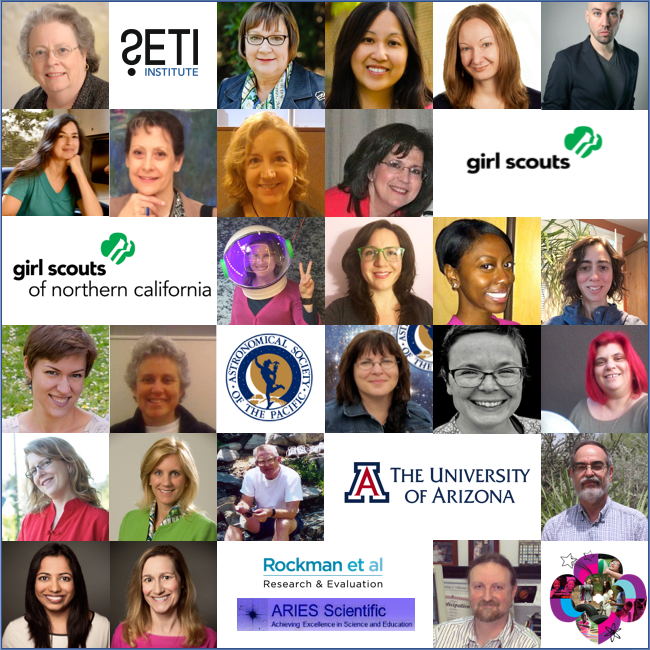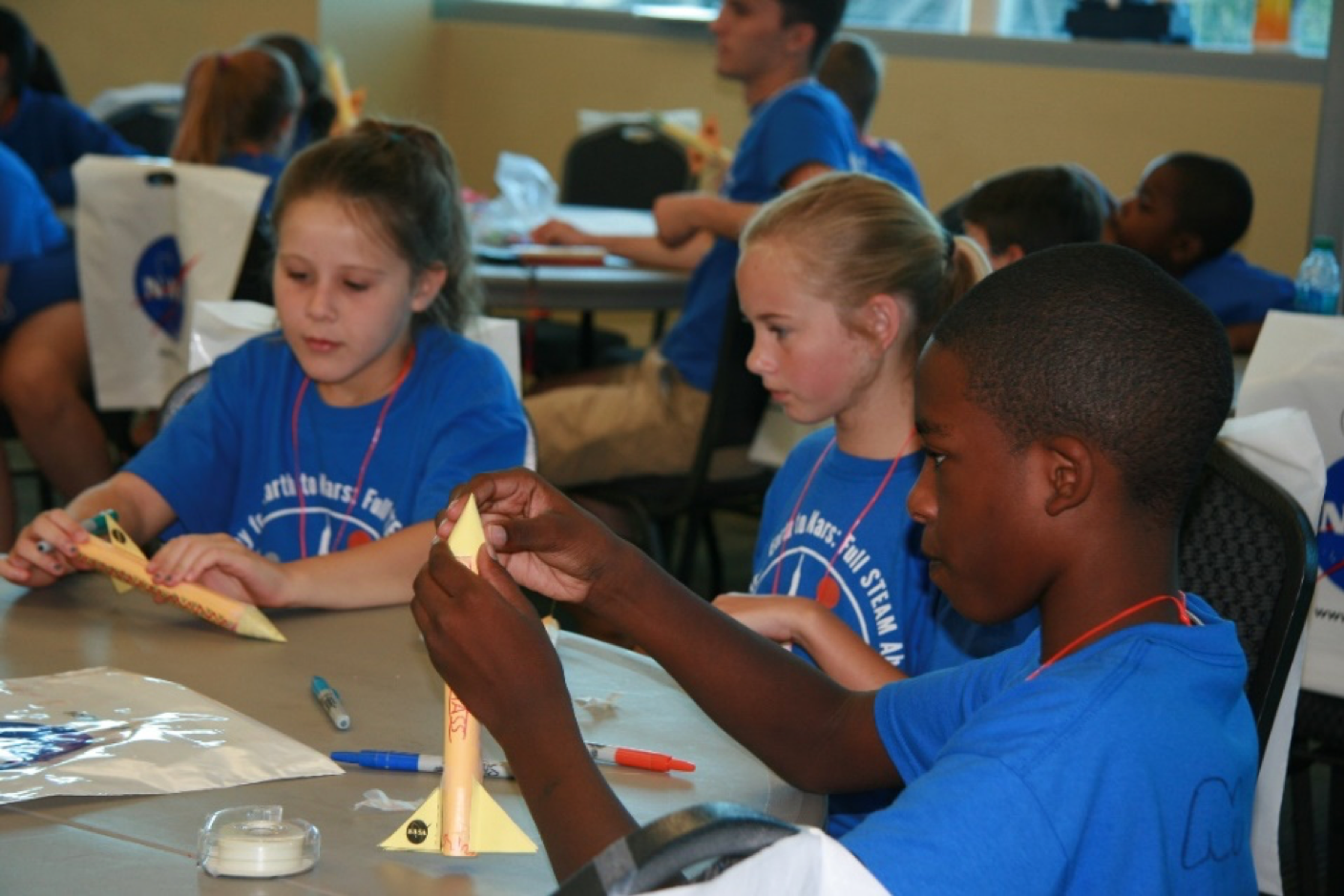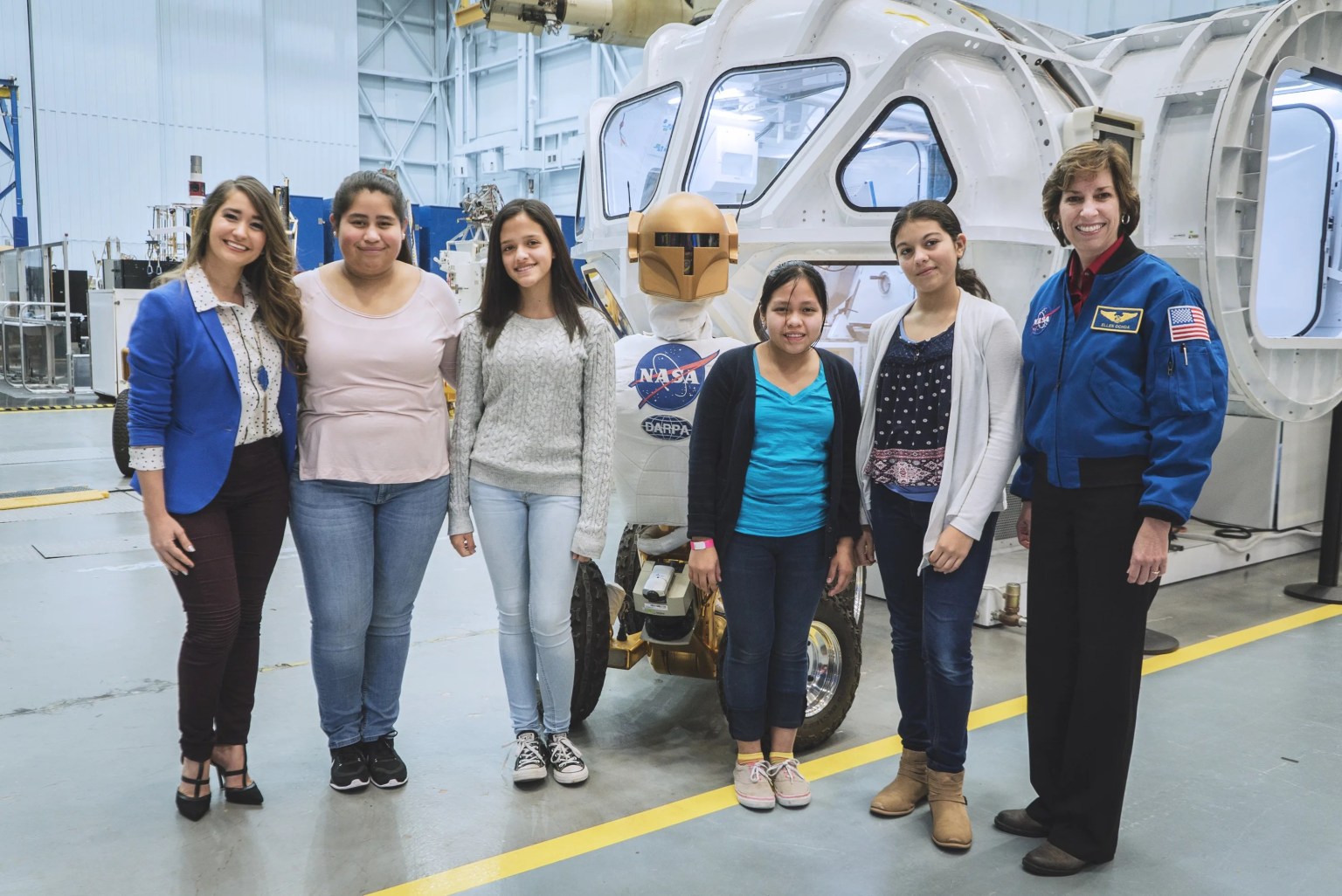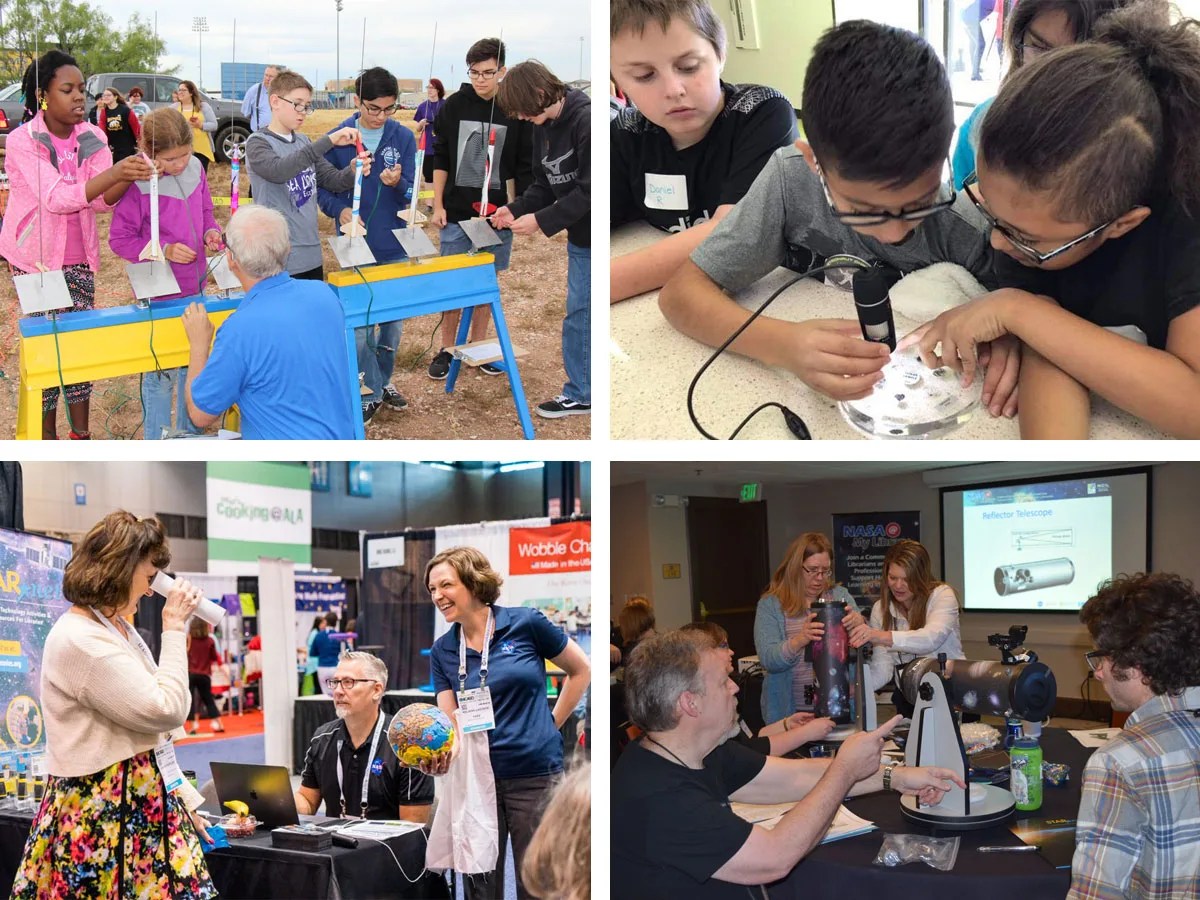Girl Scouts: Reach for the Stars
Team Mission
Reach for the Stars: NASA Science for Girl Scouts (Girl Scout Stars) aims to enhance STEM experiences for Girl Scouts in grades K-12 through the national Girl Scout Leadership Experience. New space science badges are being created for every Girl Scout level. Using best practices, we engage girls and volunteers with the fundamental STEM concepts that underpin our human quest to explore the universe. Through early and sustained exposure to the people and assets of NASA and the excitement of NASA’s Mission, they explore STEM content, discoveries, and careers.
Every great dream begins with a dreamer. Always remember, you have within you the strength, the patience, and the passion to reach for the stars to change the world.

Harriet Tubman
Today’s tech savvy Girl Scout volunteers prefer just-in-time materials and asynchronous learning. The Girl Scout Volunteer Tool Kit taps into the wealth of online materials provided by NASA for the new space science badges.
Training volunteers supports troop activities for the younger girls. For older girls, we enhance Girl Scout summer camp activities, support in-depth experiences at University of Arizona’s Astronomy Camp, and “Destination” events for the 2017 total solar eclipse. We partner with the Night Sky Network (NSN) to engage amateur astronomers with Girl Scouts. In addition, Arizona leads Girl Scout Leaders' Workshop in Hands-on Astronomy. ARIES Scientific and SETI Institute lead eclipse preparation and ARIES directs summer sessions at NASA Goddard Space Flight Center for teams of volunteers, amateur astronomers and older Girl Scouts.
There are currently 1.9 million Girl Scouts and 800,000 volunteers in the USA. In our badge development for every Girl Scout level, we are working with the Girl Scouts of Northern California (44,000 girl members and 29,000 volunteers) and 10 additional Girl Scout councils across the country to test badge requirements for girls and resources for volunteers that will be released to all 112 Gil Scout councils in August 2018 and August 2019.
Science is fun. Science is curiosity. We all have natural curiosity. Science is a process of investigating. It’s posing questions and coming up with a method. It’s delving in.

Sally Ride
First American Woman in Space
SETI Institute leads the experienced space science educators at Astronomical Society of the Pacific, University of Arizona, and ARIES Scientific. Girl Scouts of the USA leads dissemination of Girl Scout Stars to Councils with support of Girl Scouts of Northern California. Through professional development of Girl Scout volunteers, Girl Scout Stars enhances public science literacy. Girl Scout Stars supports the NASA Science Mission Directorate Science Education Objectives and NASA’s STEM Engagement and Educator Professional Development lines of business. The Girl Scout Research Institute at Girl Scouts of the USA leads program evaluation with Rockman, et al, external evaluators.
What does your team hope to achieve?
The Girl Scout Stars team aims to inspire and engage girls, ages 5 to 18, in NASA space sciences through STEM Girl Scout badges for all levels, through astronomy and space camp activities, and to support Girl Scout volunteers. Girl Scout Stars also aims to create a long-term relationship between NASA and the Girl Scouts of the United States of America to sustain connections to NASA's STEM professionals and achievements beyond the duration of the project.































